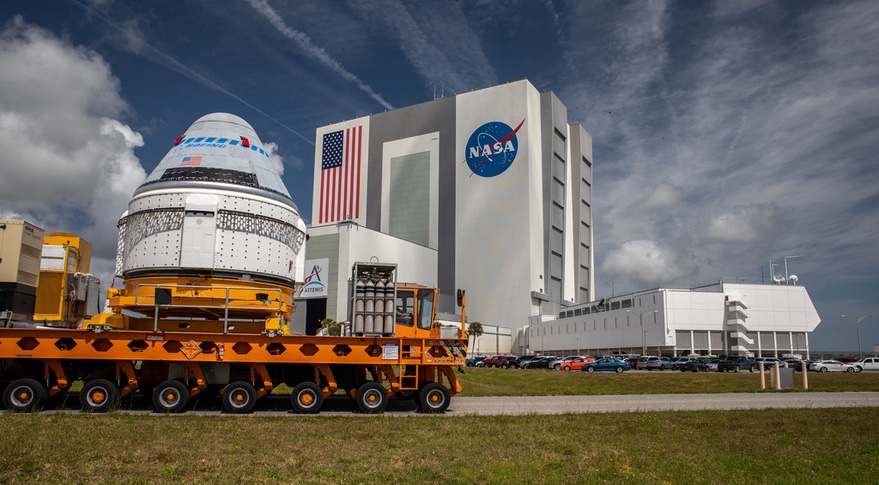WASHINGTON — NASA and Boeing say they’re confident they have resolved a valve issue that delayed a test flight of the company’s CST-100 Starliner commercial crew vehicle last year and are ready to try again later this month.
Boeing moved the Starliner spacecraft from a processing facility at the Kennedy Space Center May 4 to a United Launch Alliance vehicle processing facility at Space Launch Complex 40. The Starliner will be installed on the Atlas 5 rocket there for final preparations for the Orbital Flight Test (OFT) 2 mission, scheduled for launch May 19 at 6:54 p.m. Eastern.
The company was hours away from launching OFT-2 last August when it scrubbed the count because of problems opening propellant valves in the spacecraft’s service module. The company later called off the launch after discovering 13 valves were corroded shut when nitrogen tetroxide (NTO) interacted with moisture, creating nitric acid.
In a May 3 call with reporters, Boeing officials said months of investigation, carried out with NASA, confirmed their earlier assessment that NTO, seeping through Teflon seals in the valve, interacted with ambient moisture to create nitric acid and corrode the aluminum housing of the valves. That assessment included extensive testing at NASA’s White Sands Test Facility and analysis of the corroded valves at the Marshall Space Flight Center.
“There’s been a significant amount of testing and root cause analysis that’s been performed by the entire team,” said Mark Nappi, vice president and program manager of Starliner at Boeing. “We are confident that we have the right mitigation in place.”
That mitigation includes doing a “dry purge” of the valves with nitrogen gas to remove moisture and sealing up an electrical connector that could be a path for moisture to take. The NTO was loaded into the spacecraft later in the processing of the vehicle to reduce the time it could seep through the valve. The valves will also be activated every two to five days to confirm they can move properly.
The valves themselves have not been redesigned, said Michelle Parker, vice president and deputy general manager of space and launch at Boeing. “We have a usable solution for OFT-2. We don’t expect to have any issues,” she said. “We’ll look long-term to see if there are improvements to be made. The aluminum housing may be one piece of that. But right now, we’re confident in the solution that we have.”
The upcoming OFT-2 mission will be a second uncrewed test flight of Starliner. The original OFT mission in December 2019 suffered technical problems, including a mission timer that was incorrectly set that caused problems after the spacecraft reached orbit, as well as a software issue discovered during the truncated flight that could have caused the spacecraft’s service module to collide with the crew module after separation just before reentry.
“We certainly learned a lot with OFT-1,” Parker said. The key tests for OFT-2 will be to confirm the software changes made to address the problems during the first flight as well as to approach and dock with the International Space Station, which it was unable to do during OFT. “Those areas that we haven’t yet demonstrated will be of particular interest to us, although the entire mission has criteria that we need to meet.”
Starliner will deliver about 225 kilograms of cargo, mostly food, to the station, and remain docked to the station for several days. It will return with about 270 kilograms of cargo, such as empty nitrogen-oxygen gas recharge tanks.
A successful OFT-2 flight would allow Boeing to proceed with its Crew Flight Test (CFT) mission, the first crewed flight of the spacecraft. Nappi said Boeing could be ready to fly CFT as soon as the end of the year. “We understand we’re going to learn a lot from OFT-2,” he added. “That, and many other variables, will dictate where the final schedule falls with the launch of CFT.”
Steve Stich, NASA commercial crew program manager, confirmed that CFT could be ready to launch as soon as the end of the year. “We’re taking it one step at a time,” he said. “The best path to CFT is a successful OFT-2 flight.”
